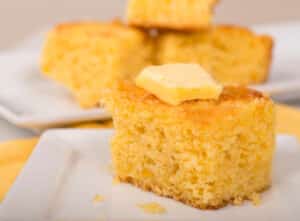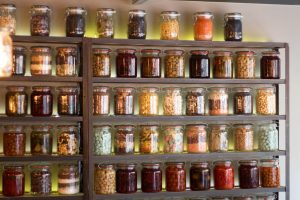If you’re familiar with Nourishing Traditions then you’ve certainly heard of soaking grains. I personally believe that soaking is just a half-step towards the better option of fermentation, which you can read more about here.
That said, sometimes I want to soak something because, you know, I accidentally killed my sourdough starter… or other better reasons which I can’t actually think of right now. So, yeah, I killed my sourdough starter and I haven’t started a new one yet. And that’s why I’ve been soaking stuff lately.
It’s actually fairly easy to convert any recipe to a “soaked” recipe. First, though, lets talk about the elements necessary for a good grain-soaking:
- Moisture. You can achieve this with water or some type of dairy product.
- Acidity. This can be vinegar or lemon juice added to water or a cultured dairy product such as kefir, yogurt, or buttermilk which all contain lactic acid.
- Warmth. Generally speaking, fermentation happens faster and more efficiently if temperatures are between 60 and 90 degrees.
- Time. The longer, the better. In fact if you let it soak long enough it will eventually just ferment anyway.
A lot of people talk about phytic acid and neutralizing other types of anti-nutrients. I think this is all good, but personally, I’ve just found it is a lot easier on the body to digest grains that have been broken down a bit through soaking or fermentation before eating. That’s because whole grains contain fiber, which, while some tout its health benefits, can be very hard to digest.
There are two types of common baked goods: yeast-risen and “quick” breads. Yeast-risen breads usually require a proofing period which can be extended to also include the soaking period, but you have to make some adjustments. Quick breads can be soaked before adding leavening agents and other ingredients like eggs.
For a soaked yeast-risen bread I like something akin to this no-knead bread. It has a long rise time because it uses very little yeast. I replace 2 tablespoons of the water with apple cider vinegar and have used entirely whole grain flour with different, but delicious results. I have done variations on this with other bread recipes using a ratio of 6 cups flour to 1/2 teaspoon commercial yeast with two long rising periods.
For a soaked quick bread you will have to go against the formula that goes something like this: mix dry ingredients in one bowl, mix wet in another bowl, combine and bake. Instead I mix my flour with whatever liquid is involved – usually some type of cultured dairy. I let that sit for at least 12 hours. Then any other liquid ingredients I combine in a small bowl – eggs, melted butter, etc. I then sprinkle the salt and leavening agent over the grain-dairy soaking mixture. I slowly pour the liquid ingredients into the soaked flour with sprinkled salt and leavening agents while stirring just until combined. If a recipe calls for butter to be cut into the flour I do that and then add the liquid for soaking.
I have successfully made this 100% cornmeal cornbread into a soaked recipe by simply soaking the cornmeal and milk (usually a combination of kefir and fresh milk). I then proceed with the rest of the recipe 12-24 hours later.
Generally speaking, a soaked recipe is usually not identical to a non-soaked recipe in results. Often times I find that the texture is actually better, especially the “raising” property of the bread probably due to the breakdown of the fiber. Other times it’s just different. Because we notice a difference in how we feel, any small taste differential is minor when we leave the table feeling nourished instead of heavy and tired.







